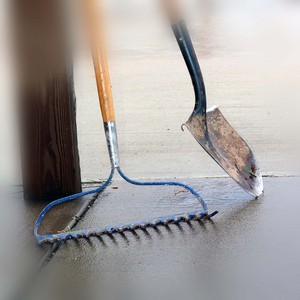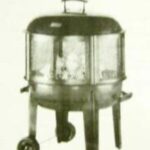When it’s bitter cold outside and there’s a foot of snow on the ground, it’s difficult for most of us to think much about our backyard vegetable gardens. But to the true garden enthusiast, sitting next to the fireplace with the new seed catalog that just arrived in the mail is a great way to spend a blustery winter evening, and the thoughts of what and when to plant are a source of pure enjoyment.
Even the novice gardener may be aware of the fact, however, that in many parts of the country, the garden soil can be worked as early as late February and certainly by mid-March. If they get that “green-thumb fever,” they may be curious to know what types of plants can be started early, even if they have to wait until after the last frost before setting out most of the regular crops.
The good news for those who just can’t wait to have something to tend is that there are some cool weather plants that actually do quite well in late winter and early spring. In fact, some of these need to be both planted and harvested before warm weather comes around. Obviously, setting plants out and burying seeds will always be subject to the complete thawing of your topsoil. Where the ground in the garden can be worked in early March, however, here are a few ideas that might work to satisfy those eager gardeners who can’t wait to get started.
1. Onion Sets. Most types of onions do quite well when they are planted directly in the garden as onion sets in mid-March. At the garden shop, the small, partially grown bulbs are usually packaged as bundles. For most backyard vegetable gardens, one or two bundles of each onion color will be plenty.
2. Radishes. Radishes can be a great fix for the gardener who is so anxious to get the season started. Planted as seeds in a shallow furrow, radishes love the cool weather, and are good selections for March gardening. Both the round red varieties (like the Cherry Belle) and the long white root types (like the Icicle) radishes can be purchased in seed packets at the store. The gardener will want to watch these closely, however, because these guys will germinate, grow, and be ready to harvest in a short time, often as quickly as three weeks. But that’s another great advantage. Plant as many as you like without worrying about garden space. Radishes are harvested so soon after they’re planted, they will be out of the way before it’s time to work with the warm weather plants.
3. Lettuce. Leaf lettuce is a wonderful cool weather garden crop that can be seed-planted in March. The garden shop will probably have several varieties to select from, but Black-seeded Simpson is probably the most popular. Lettuce won’t be ready as quickly as the radishes were, and may take around 45 days before the gardener can begin to rob the plants for a fresh salad. You may want to consider staggering the planting of the leaf lettuce rows by several days, so the entire crop doesn’t mature on the same weekend.
4. Spinach. Another garden crop that can be planted from seeds, spinach grows well in the cool weather. A fresh salad with a mixture of spinach leaves and some of that leaf lettuce from the next row can be a real treat when those early garden crops are ready to harvest. The garden store will likely have several varieties to choose from, but Olympia and Bloomsdale are two of the more popular types, and will be ready to eat in about 48 days.
5. Carrots. Gardeners may want to wait until the latter part of March for planting carrots, but direct seeding about three to four weeks before the last frost will provide a wonderful homegrown treat in about 80 days after planting.
6. Peas. The list of crops that can be planted directly into the garden in late winter or early spring should always include peas. Peas are tolerant of the occasional frost and extended periods of cooler weather that are typical for the season. Assuming that the seeds will reach maturity after about 60 days of growth, the gardener may wish to set out several sections of peas, a week or so apart, in order to have more than one harvest when the time comes.
7. Others. While the short menu of plants mentioned here are varieties that can be placed directly into the garden in March, a great many others can be started indoors under a grow light, and then set out when the danger of frost is nearly gone. Broccoli, Brussels sprouts, cabbage, beets, and even some early-maturing tomatoes can be transplanted to the backyard garden bed when the weather is more favorable.
Regardless of where one lives, gardening can be a year-round project. Even in the colder months, planning and preparation for the busier season can keep the enthusiast occupied. For many, however, seeing something green pop out of the ground in those early months is the only absolute cure for garden fever.






